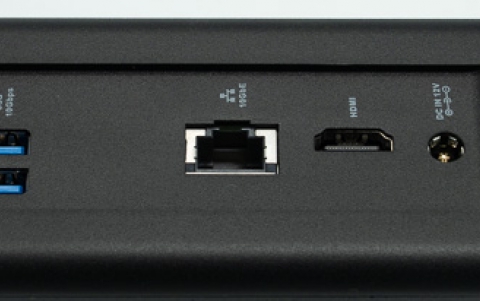
Intel and IBM on separate Solar Energy Projects
Intel and IBM have joined the team of technology companies making alternative-energy projects, announcing separate efforts to produce their own solar cells.
Tokyo Ohka Kogyo Co., Ltd. (TOK) and IBM are collaborating to establish new, low-cost methods for bringing the next generation of solar energy products to market -- products that will be more affordable and easier to install than those available today.
Specifically, TOK and IBM have agreed to jointly develop processes, materials, and equipment suitable for the production of CIGS (Copper-Indium-Gallium-Selenide) solar cell modules. Currently, the relatively high-cost of electricity produced by solar cells compared to electricity from other energy sources is an inhibitor to a more widespread adoption of solar energy. Use of thin film technology, such as CIGS, has great promise in reducing the overall cost of solar cells and further enabling their widespread adoption.
IBM Research has developed new, non-vacuum, solution-based manufacturing processes for CIGS solar cells and is targeting efficiencies around 15% and higher. Current thin film product efficiencies vary from around 6% to less than 12%. Combining IBM's technology with the proven coating technique and high purity chemicals of TOK -- built upon years of experience manufacturing semiconductors and LCD panels -- has the potential to bring the large scale production of thin-film solar cells to market.
Despite the abundance of solar power, current solar cell systems, which largely rely on silicon for their conversion function, are comparatively less efficient and more expensive than other energy sources. Thin-film CIGS solar cells can be 100x thinner than silicon-wafer cells, can be deposited on cheap glass substrates, and thus have correspondingly lower cost.
Thin-film solar cells also have the advantage that they could be arranged on a flexible backing, suitable for the tops and sides of buildings, tinted windows, and other surfaces. Solution processing allows "printing" onto a rolled backing of a flexible module, or a glass plate, eliminating many of the high energy and equipment intensive processes that are typical in conventional photovoltaics manufacturing.
Intel Spins off Solar Business
Intel is spinning off key assets of a start-up business effort inside Intel's New Business Initiatives group to form an independent company called SpectraWatt Inc. Intel Capital, Intel's global investment organization, is leading a $50 million investment round in SpectraWatt and is joined by Cogentrix Energy, LLC, a wholly owned subsidiary of The Goldman Sachs Group, Inc., The transaction is expected to close in the second quarter of 2008.
SpectraWatt will manufacture and supply photovoltaic cells to solar module makers. In addition to focusing on solar cell technologies, SpectraWatt will concentrate development efforts on improvements in current manufacturing processes and capabilities to reduce the cost of photovoltaic energy generation. SpectraWatt expects to break ground on its manufacturing and advanced technology development facility in Oregon in the second half of 2008 with first product shipments expected by mid-2009.
The end-user market segment for solar technology in 2007 was approximately $30 billion, a 50 percent increase from 2006, according to Photon Consulting. Solar industry growth of 30 to 40 percent annually is expected to continue in years to come as the economics of solar, which is currently approximately twice the cost of delivered retail electricity on a per kilowatt basis, begins to approach that of traditional electricity-generation technologies.
Specifically, TOK and IBM have agreed to jointly develop processes, materials, and equipment suitable for the production of CIGS (Copper-Indium-Gallium-Selenide) solar cell modules. Currently, the relatively high-cost of electricity produced by solar cells compared to electricity from other energy sources is an inhibitor to a more widespread adoption of solar energy. Use of thin film technology, such as CIGS, has great promise in reducing the overall cost of solar cells and further enabling their widespread adoption.
IBM Research has developed new, non-vacuum, solution-based manufacturing processes for CIGS solar cells and is targeting efficiencies around 15% and higher. Current thin film product efficiencies vary from around 6% to less than 12%. Combining IBM's technology with the proven coating technique and high purity chemicals of TOK -- built upon years of experience manufacturing semiconductors and LCD panels -- has the potential to bring the large scale production of thin-film solar cells to market.
Despite the abundance of solar power, current solar cell systems, which largely rely on silicon for their conversion function, are comparatively less efficient and more expensive than other energy sources. Thin-film CIGS solar cells can be 100x thinner than silicon-wafer cells, can be deposited on cheap glass substrates, and thus have correspondingly lower cost.
Thin-film solar cells also have the advantage that they could be arranged on a flexible backing, suitable for the tops and sides of buildings, tinted windows, and other surfaces. Solution processing allows "printing" onto a rolled backing of a flexible module, or a glass plate, eliminating many of the high energy and equipment intensive processes that are typical in conventional photovoltaics manufacturing.
Intel Spins off Solar Business
Intel is spinning off key assets of a start-up business effort inside Intel's New Business Initiatives group to form an independent company called SpectraWatt Inc. Intel Capital, Intel's global investment organization, is leading a $50 million investment round in SpectraWatt and is joined by Cogentrix Energy, LLC, a wholly owned subsidiary of The Goldman Sachs Group, Inc., The transaction is expected to close in the second quarter of 2008.
SpectraWatt will manufacture and supply photovoltaic cells to solar module makers. In addition to focusing on solar cell technologies, SpectraWatt will concentrate development efforts on improvements in current manufacturing processes and capabilities to reduce the cost of photovoltaic energy generation. SpectraWatt expects to break ground on its manufacturing and advanced technology development facility in Oregon in the second half of 2008 with first product shipments expected by mid-2009.
The end-user market segment for solar technology in 2007 was approximately $30 billion, a 50 percent increase from 2006, according to Photon Consulting. Solar industry growth of 30 to 40 percent annually is expected to continue in years to come as the economics of solar, which is currently approximately twice the cost of delivered retail electricity on a per kilowatt basis, begins to approach that of traditional electricity-generation technologies.













